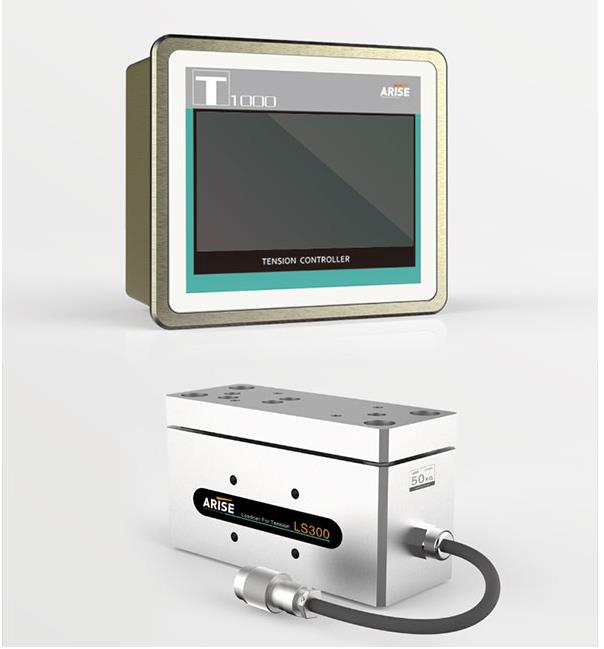A closed-loop tension control system is a sophisticated approach to maintaining consistent tension in various industrial processes, such as in printing, packaging, textile manufacturing, and converting operations. Tension control is crucial in these processes as fluctuations can lead to product defects, machine malfunctions, and waste, ultimately affecting productivity and quality. In a closed-loop system, feedback mechanisms continuously monitor and adjust tension in real-time, allowing for precise control and adaptability to changing conditions. This article explores the working principles, benefits, applications, and advancements in closed-loop tension control systems.

How a Closed-Loop Tension Control System Works
In a closed-loop tension control system, sensors measure the actual tension in the material, providing real-time data to a controller. The controller compares this data with a pre-set desired tension and makes automatic adjustments as needed to maintain consistent tension. This closed-loop feedback process allows the system to respond quickly to changes in material properties, machine speed, and external forces, keeping tension stable throughout the operation.
Key Components of a Closed-Loop Tension Control System
Sensors: Sensors, such as load cells, dancer arms, or ultrasonic sensors, monitor the material's tension or position. These tension sensors provide accurate feedback to the controller.
Controller: The tension controller is the system's brain, receiving data from the sensors and calculating any deviation from the target tension. Based on this calculation, it sends commands to adjust tension accordingly.
Actuators: Actuators, such as brakes, clutches, or servo motors, make physical adjustments to maintain the correct tension by either increasing or decreasing the tension force.
Feedback Mechanism: This mechanism enables continuous monitoring and adjustment, creating a closed-loop system where the tension is constantly fine-tuned.

Benefits of Closed-Loop Tension Control
The precision offered by closed-loop tension control is essential in industries where maintaining consistent tension is critical to product quality and process efficiency. Key benefits include:
Enhanced Product Quality: By maintaining stable tension, closed-loop systems prevent issues such as wrinkling, stretching, and tearing of materials, resulting in high-quality finished products.
Reduced Waste: Fluctuating tension can lead to material damage and waste. Closed-loop control minimizes these issues, reducing waste and lowering costs.
Increased Efficiency: The system’s ability to respond to changes in real time reduces downtime due to manual adjustments or corrective actions.
Extended Equipment Life: Maintaining steady tension reduces mechanical wear and tear on equipment, extending its lifespan and lowering maintenance costs.
Versatility Across Materials: Closed-loop systems can be configured for various materials, from paper and film to fabric and metal, making them adaptable to different industrial applications.
Applications of Closed-Loop Tension Control Systems
Closed-loop tension control systems have become essential in industries where precise control over tension is required. Here are a few major applications:
Printing and Converting Industries: Tension control is crucial in printing to avoid misalignment and color overlap. Converting operations, such as cutting and laminating, also benefit from consistent tension to ensure precision.
Textile Manufacturing: Textile production processes, including weaving, knitting, and dyeing, require consistent tension to prevent fabric distortion and achieve uniform patterns and colors.
Packaging Industry: In packaging, particularly in flexible packaging and labeling, maintaining tension prevents material deformation and ensures precise placement.
Metal and Foil Processing: Metal sheets and foils require controlled tension during rolling, cutting, and coating to ensure accuracy and prevent damage.
Battery and Electronics Manufacturing: As industries like battery manufacturing use delicate films and foils, closed-loop tension control systems are essential to prevent tearing and wrinkling during the coating, cutting, and assembly stages.
Advanced Features in Modern Closed-Loop Tension Control Systems
With advancements in automation and digital technology, closed-loop tension control systems have evolved, offering enhanced features for precision and adaptability:
Automated Calibration: Modern systems include automated calibration routines, reducing setup time and ensuring consistent tension settings between production runs.
Adaptive Control Algorithms: Advanced algorithms can adjust tension control settings dynamically in response to changes in speed, temperature, and material properties. This is especially beneficial in industries where materials with varying elasticity are processed.
Data Logging and Analytics: Integration with data logging systems allows for monitoring and recording tension control performance. Analytics can provide insights into system efficiency, identify patterns, and support predictive maintenance.
Remote Monitoring and Control: Many closed-loop systems now support remote monitoring and adjustments via a centralized system. Operators can track system performance, adjust parameters, and troubleshoot issues without needing to be physically present.
Integration with Industry 4.0: Closed-loop systems that are Industry 4.0-compatible can be connected to a larger network, allowing for predictive maintenance, real-time monitoring across multiple production lines, and integration with other smart systems.

Choosing the Right Closed-Loop Tension Control System
When selecting a closed-loop tension control system, it is essential to consider:
Material Properties: Different materials have unique characteristics, such as elasticity and thickness, requiring different tension control approaches.
Process Speed and Variability: High-speed processes require fast-responding control systems with robust sensors and actuators to avoid lag in tension adjustments.
Environmental Factors: Temperature, humidity, and other environmental conditions can affect tension. Systems designed to compensate for these variables can provide more consistent results.
Integration Needs: Ensuring that the tension control system is compatible with existing production lines and can integrate with broader automation systems is critical for seamless operation.
Support and Maintenance: A reliable system provider with a good support network is essential for training, maintenance, and troubleshooting.
In summary, a closed-loop tension control system is a vital asset in any industry that relies on precise material handling. By continuously monitoring and adjusting tension in real-time, these systems provide unmatched control, ensuring quality, efficiency, and reduced waste. With advances in adaptive algorithms, automated calibration, and remote monitoring, closed-loop tension control systems are becoming increasingly sophisticated, meeting the growing demands of modern industrial processes. Whether in printing, packaging, textiles, or electronics, these systems are critical to achieving high standards of precision and reliability in production.







